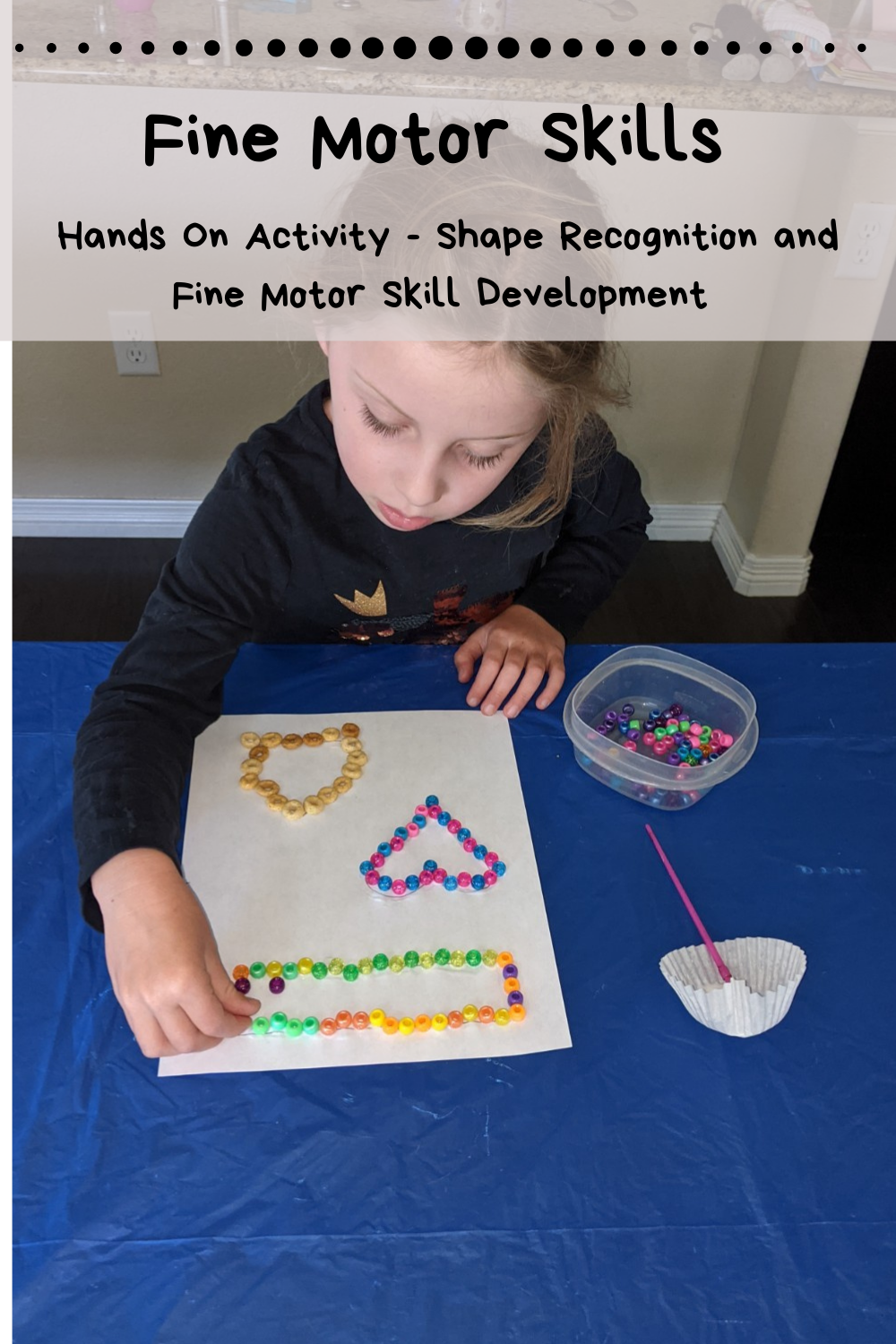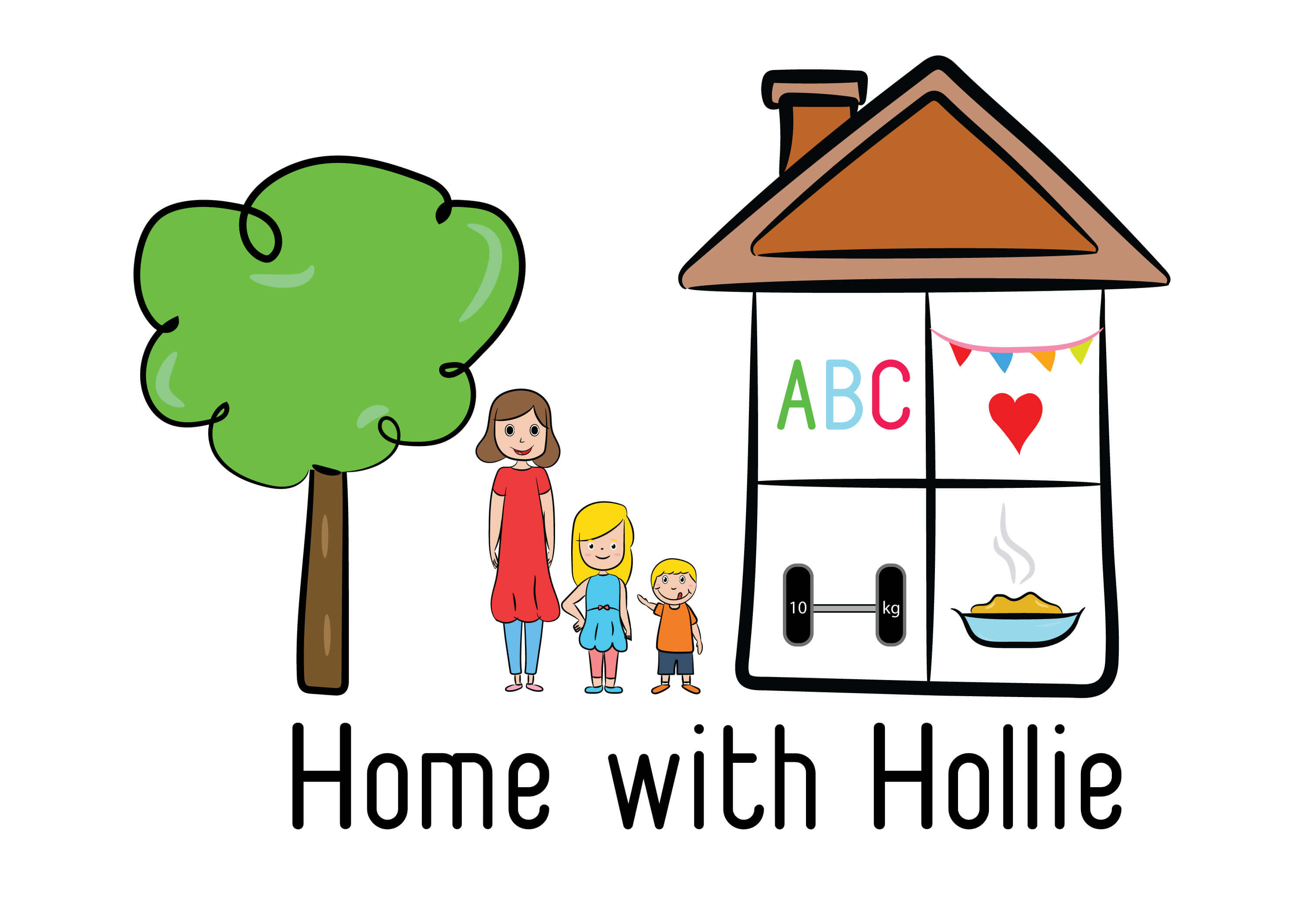
Sharing is caring!
The ability to use the fingers to neatly do fine work like writing, drawing, cutting and coloring is called fine motor skills. These skills can be improved with practice using the fingers and building finger strength. Use this Fine Motor Shapes Activity to help your child learn their shapes and practice fine motor skills at the same time!
We’ve combined the learning of shapes with the development of fine motor skills in this activity. Students will take shapes that you have drawn and outline them with liquid glue. Then beads or cereal will be placed on the glue outline. Once dried, your child will have a visual reminder of the shapes they’ve learned.
Fine Motor Skills will not really begin to develop until your child has acquired certain gross motor skills. Gross motor skills use large muscle groups like the whole arm or the whole leg and usually involve the body working together. Skills like catching a ball, climbing a playground ladder, or drawing on the sidewalk use gross motor skills.

Disclaimer: This blog post contains affiliate links. If you use them, I might be rewarded credit or a commission of the sale. Please note that I only recommend tools that I personally use and love and I always have my readers’ best interest at heart.
Developing Gross Motor Skills First
If your child seems to be struggling with the fine motor shapes activity, it might just be that they aren’t ready for fine motor skills yet. In that case, you should focus on gross motor skills or large muscle movement activities. As parents, we have a tendency to do too much for our young children instead of letting them climb the ladder themselves, etc.
- Take your child to the playground as often as possible and encourage them to do the activities on their own without help.
- Practice throwing and catching a soft and large ball with your preschool child.
- Get your kids outside exploring, running, jumping, and climbing as much as possible.
- Have your child help carry in groceries or carry down their own dirty laundry.
- Your student can use sidewalk chalk on a driveway to draw large pictures.
- Children can draw large pictures on chalkboards or whiteboards.
- Activities like skipping, running, galloping, sliding, and jumping all work on gross motor skills development.

Toys that Build Gross Motor Skills
Plasma Car. These cars build core strength.
Balance Bike. Again, this is working core strength. Once a child learns a balance bike, they can transition to a bike with pedals and no training wheels pretty quickly.
Sidewalk Chalk. This is a combination of fine motor and gross motor activity because the child is holding chalk but standing or crawling and drawing with large muscle movements.
Beach Ball. Catching and tossing a beach ball works all the large muscles.
Slide. A backyard slide is a simple way to get your child climbing and moving each day.
Floor Puzzles. Combine fine and gross motor skills with an activity that gets your child on the floor stretching and working.
Tunnels. Crawling is really amazing for the developing human brain. Not only does it build gross motor skills, but it also creates neural pathways for math! Crawling is used in occupational therapy for preschool and elementary students who struggle with gross motor skills and math.
Building Fine Motor Skills
Once your child is ready to work on fine motor skills, activities like our fine motor shapes activity are a great place to start. If your child has to use their hands and fingers to get the job done, it’s improving their fine motor skills. At the same time, your student will be improving hand-eye coordination as well. If cutting, coloring, or writing neatly is difficult, that’s pretty normal for this age. Just give them lots of practice doing these things *on their own*. That’s why I emphasize so much letting your child do the work on his or her own. Perfection is not the goal. Here are some other activities that build fine motor skills.
Fine motor skills activities are work. Why do I say that? Any activity that involves fine motor skills for preschool children is hard work disguised as play. Work on these skills for short stretches of time, give your student built-in breaks, and expect your child to tire quickly, lose interest, or struggle with attitude if the activity goes on for too long. Be flexible and willing to stop when this happens. Of course, as your child matures and develops more skill, the projects get easier and they can work for longer stretches of time. Pushing or expecting too much in this area is not helpful.
Fine Motor Skills Work
Scissor Work. Any craft or activity that requires the use of scissors is amazing for fine motor skills, hand strength, and hand-eye coordination. So even though those craft activities make you roll your eyes and they seem like busywork, they are actually accomplishing a lot. If your child isn’t ready for kid’s scissors yet, try loop scissors to get them started.
Lacing Work. Toys like Lacing beads, shapes, or printables that give your child a shoelace and expect him or her to put the laces through the holes are called lacing work. These toys are excellent for fine motor skills and again, hand-eye coordination.
Tracing Work. Tracing takes the pressure off of a child to draw something perfect and gives them lines to trace. The thicker the lines, the easier the activity is for young children.
Drawing Work. Freehand drawing is also a pressure-free activity as long as you are letting your child draw whatever they want.
Coloring Work. Using large crayons, markers, or thick pencils is a perfect beginning for coloring work. You can also use crayons made out of interesting shapes like these rock crayons. Triangle-shaped crayons or pencils help encourage the proper pencil grip for beginners.
Toys that Build Fine Motor Skills
Materials for the Fine Motor Shapes Activity

- paper
- pencil
- liquid glue
- cupcake liner/glue holder
- paint brush
- beads/cheerios
- a small bowl.
Instructions for the Fine Motor Shapes Activity

- Draw a range of shapes on a piece of paper around 4 square inches each. Make sure to tailor these shapes to your learner’s current learning position. E.g. For beginner learners draw a circle, square, triangle, etc For advanced learners draw a hexagon, pentagon, parallelogram, etc
- Next, place some glue in your cupcake liner and your beads/cheerios in the small bowl
- Ask your learner to use the paintbrush and glue to trace one of the shapes.
- Then ask your learner to stick the beads/cheerios on the glue to make the shape.
- Finally, repeat with the remaining shapes.
Related Posts
Circle Time for Preschool
Circle time for preschool is a wonderful way to begin your learning time together! Start…
July 12, 2021Fun Ways to Learn the Alphabet
Have you made any of the letter crafts yet? If you are looking for fun…
June 8, 2021

